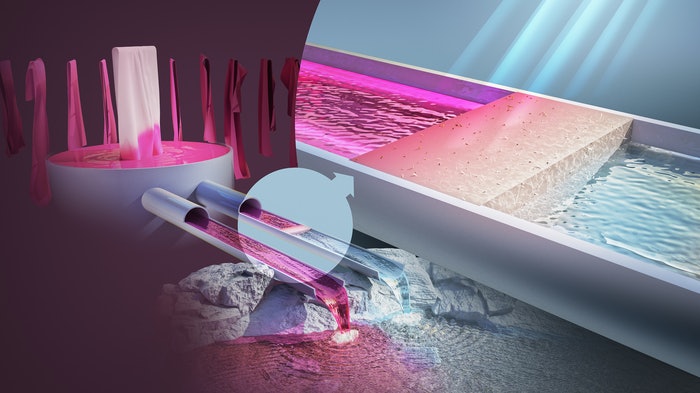Researchers at Chalmers University of Technology have developed a cellulose-based material to purify contaminated water by utilizing the outstanding adsorption capacity of cellulose nanoparticles. The material is capable of removing more than 80% of toxic dye pollutants from wastewater, which is a significant problem in countries with poor water treatment technologies. The purification method requires neither heat nor pressure and uses sunlight to catalyze the process. The researchers believe that the cellulose powder filter system could produce both irrigation and drinking water. Additionally, the researchers see great potential in using cellulose nanocrystals to remove other water pollutants besides dyes. They have successfully removed toxic hexavalent chromium from wastewater using a similar cellulose-based material. The research group is also exploring how to use cellulose to purify antibiotic residues from water.
New Cellulose-Based Material Removes 80% of Dye Pollutants from Wastewater
Researchers at Chalmers University of Technology have discovered a new method to purify contaminated water using cellulose-based material. The method can remove toxic dyes from textile industry wastewater and may have implications for countries with inadequate water treatment technologies.
The research group, led by Gunnar Westman, Associate Professor of Organic Chemistry, focuses on new applications for cellulose and wood-based products. The researchers have developed a bio-based material, a form of cellulose powder with outstanding purification properties. The researchers can modify this material to remove specific pollutants.
The cellulose nanocrystals possess an excellent adsorption capacity, which the researchers have utilized to create the bio-based material. The researchers recently published a study in Industrial & Engineering Chemistry Research, showing that the cellulose powder filter removes toxic dyes from wastewater effectively. The researchers conducted this research in collaboration with the Malaviya National Institute of Technology Jaipur in India, where toxic dye pollutants are a significant problem in textile industry wastewater.
The cellulose powder filter requires neither heat nor pressure and uses sunlight to catalyze the process. The researchers liken the method to pouring raspberry juice into a glass with grains of rice, which absorb the juice and make the water transparent again.
Gunnar Westman explains that the cellulose powder filter system could be a cost-effective and straightforward purification system. The contaminated water passes through the filter, and the pollutants are absorbed, and the sunlight entering the treatment system causes them to break down efficiently. The researchers hope that the cellulose powder filter system will benefit countries that lack adequate water treatment technology.
The researchers plan to test the method in India, where they anticipate positive results. Clean water is a necessity for everyone, and with over two billion people worldwide living with limited or no access to clean water, the cellulose powder filter system could have significant global implications.
New Cellulose-Based Method to Remove 80% of Dye Pollutants from Indian Water Sources
India is a developing country with extensive textile production, where large amounts of dyes are discharged into water sources every year. This has serious consequences for both humans and the environment. Water contaminants contain dyes and heavy metals that can cause skin damage with direct contact, increase the risk of cancer and organ damage when they enter the food chain, and impair photosynthesis and plant growth.
The researchers at Chalmers University of Technology have developed a new cellulose-based method to purify contaminated water, particularly toxic dye discharge from the textile industry in India. The method removes more than 80% of the dye pollutants from wastewater, and there are good opportunities to increase the degree of purification further.
Conducting field studies in India is the next important step, and the researchers are supporting their Indian colleagues to test the method in small-scale industries. If optimized, the cellulose powder filter system could produce both irrigation and drinking water, which could significantly improve the health of people in the surrounding areas.
Potential for broader purification applications
The researchers see great potential in using cellulose nanocrystals for the treatment of other water pollutants besides dyes. In a previous study, they successfully removed toxic hexavalent chromium from wastewater using a similar cellulose-based material. The research group is also exploring how to use cellulose to purify antibiotic residues from water.
The researchers believe that there are significant opportunities to find better water purification solutions with this material. The Wallenberg Wood Science Center provides the necessary collective expertise to make this a reality.
Don’t miss interesting posts on Famousbio










